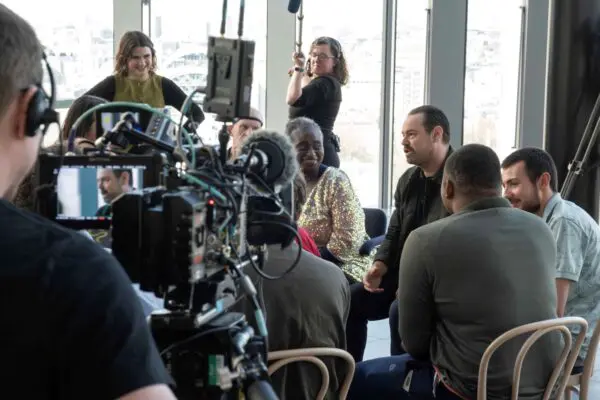It’s from her fiction folio that Gavron selects her “hardest” and “proudest” scenes.
“The hardest? Filming in West Bengal for the opening scene of Brick Lane. We were in a small, rural village, so hot that we were all bathed in sweat from the moment we stepped out of the van. From a cherry picker, we were filming the two young sisters running through a paddy field, calling to one another.
“A local crew was working with us – they were hugely experienced, but unused to sync sound. Pushed for time, we kept having to roll again, as there was a lot of noise and talking throughout each take. Finally we had quiet and went for a final take, when suddenly one of the girls stopped running midway. I kept the camera rolling, calling to her to keep going – crew and villagers, joined in my calls. But she wouldn’t budge. It turned out she had a very valid reason; there was a large, poisonous snake in her path.
Gavron’s proudest scene? She reflects: “During This Little Life, a television feature about a woman who has a premature baby. We had a number of important scenes where we needed the audience to connect with the baby in the incubator. We shot footage of our actors working with a model, animatronic baby on a set and then afterwards, the shoot went, documentary style, into a real ward to film premature babies under very stressful circumstances. We couldn’t interrupt or influence the doctors’ or babies’ movements in anyway, so we just had to grab any shots we could. It felt like an impossible task to cut these two lots of footage together and make a convincing single baby… but when we showed it to audiences, they believed it.”
Gavron describes her documentary experience this time round as a “steep learning curve. However, I knew from my years of researching that you never take ‘no’ for an answer. You have to keep persevering – that’s a key word in documentary. It’s hard work and you must keep going.
What I’ve also learned, and I would pass on as advice, is that you’ve got to find characters because they will be the way into your story or world. In fiction film you put a lot of energy into writing and casting your characters, and in a way you have to ‘cast’ them in documentary, too.”
She adds: “If it’s an open-ended story rather than a look-back at a specific historical event with a middle, beginning and end, you must devote enough time to working out a proper narrative. It’s a challenge, you may put yourself in peril but it can be very exciting.”







